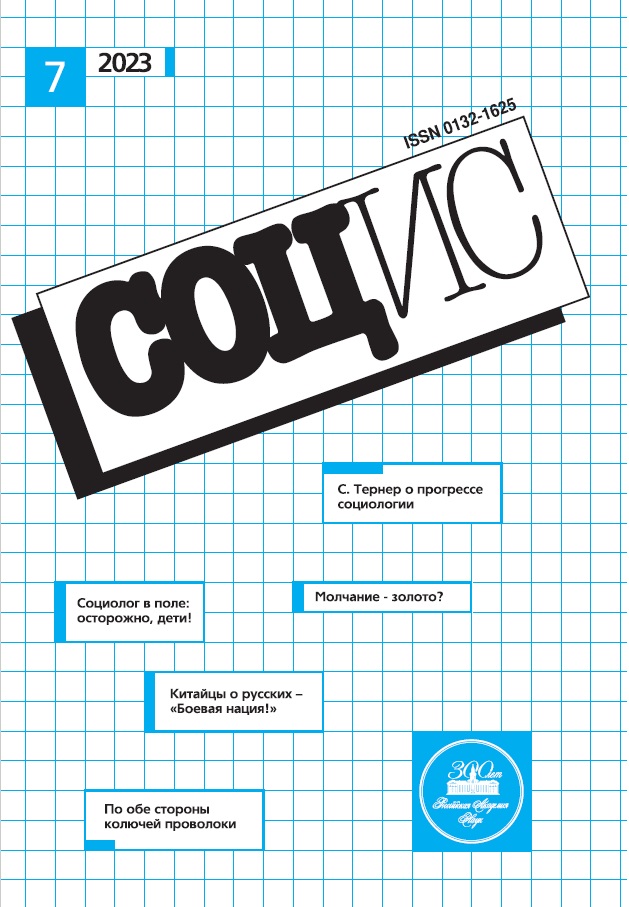”Silence Game” as a Form of Social Interaction
- Authors: Spirkina A.K.1,2
-
Affiliations:
- Institute of Sociology of FCTAS RAS
- State Academic University for the Humanities
- Issue: No 7 (2023)
- Pages: 84-92
- Section: Articles
- URL: https://kazanmedjournal.ru/0132-1625/article/view/661751
- DOI: https://doi.org/10.31857/S013216250026588-9
- ID: 661751
Cite item
Abstract
The article examines the structure of interaction, which is formed in a children's playful game – silence game. The place and role of silence in this interaction is analyzed. The conditions for the possibility of silence as a game are determined. The silence game is considered at the micro level of social life as a game situation that exists within certain spatiotemporal framework and structures interaction with the help of formal and informal rules of the game. The microstructure of the silence game is explored with the help of concepts developed in the sociology of everyday life, frame analysis and ethnomethodology. In accordance with the traditions of these areas of sociological thought, special attention is paid to the relationship between the «game» and «everyday reality», in other words, the issue of «embedding» the game in a continuous stream of social interactions of actors participating in the game and individuals observing it by «layering» (framing), switching between «regions of experience» or routine activities of participants to maintain social order.
About the authors
Anastasia K. Spirkina
Institute of Sociology of FCTAS RAS; State Academic University for the HumanitiesRussian Federation, Moscow
References
- Бейтсон Г. Теория игры и фантазии // Социальные и гуманитарные науки. Отечественная и зарубежная литература. Сер. 11: Социология. 1998. № 4. С. 181–199.
- Витгенштейн Л. Философские исследования. М.: АСТ, 2019.
- Гарфинкель Г. Концепция и экспериментальные исследования «доверия» как условия стабильных согласованных действий // Социологическое обозрение. 2009. Т. 8. № 1. С. 10–51.
- Гарфинкель Г. Что такое этнометодология? // Социологическое обозрение. 2003. Т. 3. №4. С. 3–25.
- Гарфинкель Г. Исследование привычных оснований повседневных действий // Социологическое обозрение. 2002. Т. 2. №1. С. 41–69.
- Гофман И. Анализ фреймов: эссе об организации повседневного опыта. М.: ИС РАН, 2003.
- Гофман Э. Ритуал взаимодействия: очерки поведения лицом к лицу. М.: Смысл, 2009.
- Подвойский Д.Г., Спиркина А.К. В тишине…, меж людей…: молчание как предмет социологического изучения // Социологические исследования. 2022. № 6. С. 125–135. doi: 10.31857/S013216250019659-7.
- Покровский Е.А. Детские игры: преимущественно русские. М.: ТЕРРА; «Книжная лавка – РТР», 1997.
- Старченко М.С. Молчанка – жанр детского потешного фольклора // Вестник Челябинского государственного университета. 2011. Т. 218. № 3. С. 131–133.
Supplementary files










